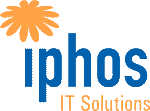ITSM & ITIL
Before we have a look at the ITIL Framework – we must focus on the ITSM –IT system management and why it is important for businesses and organisations.
What is ITSM?
As mentions above, ITSM means information technology system management or IT system management for short. It serves business or organisations and their users by contributing to their performance by making sure that valuable IT services are in check.
The ITSM defines services, performance key indicators and services levels for an It system. It delivers or contracts for services and manages the service lifecycle. And it keeps those services under constant review.
The ITIL Framework defines ITSM as the implementation and management of quality IT services that meet the needs and values of the business. IT services management is performed by IT service providers through an appropriate mix of people, process, and information technology.
Like everything in the modern world, the ITSM has a lifecycle, that is defined as followed:
The ITSM Lifecycle
- Identifying the companies or organisations needs
- Designing a solution that meets the needs
- Creating the service with the design made in step 2 and that fits the budget
- Delivering the Service of the IT System
- Support and manage the service
- Maintaining and improving the service
- Decommissioning the service
We know what an ITSM is – but what is ISIL and what is it good for?
The origin of the name ITIL is the IT Infrastructure Library, but today ITIL has outgrown the term in the three decades since it was coined. ITIL is a trademark of a company (a British government joint venture), which owns a range of best practice solutions and corresponding publications and exams. ITIL has been adopted by many organizations, and there are millions of certified ITIL practitioners worldwide.
The ITIL defines the different stages of the ITSM lifecycle and is separating it down into five stages, each corresponding to one stage of the IT service lifecycle. The five stages of the IT service lifecycle are service strategy, service design, service transition, service operation, and continual service improvement. Each stage is covered is one of the five ITIL books, and each is comprised of many processes and sub-processes that together form the set of best practices for managing that stage of the service life cycle.
The implementation of the ITSM can be done in different ways. The is the Microsoft operating framework (MOT), the ‘Control Objectives for Information and Related Technologies (COBIT)’, the ‘The Open Group Architecture Framework (TOGAF)’ and the ISO/IEC 20000. These all are different approaches to implement and maintain an ITSM. Among those frameworks, The ISIL is probably the most used Framework that also compliance with the ISO 20000 regulation. This makes it not only the most common framework but also there are also many best practice examples.
ITIL is a best practice framework for ITSM and adopting some ITIL ideas can help you work more effectively and because it was created by the UK government, it is free to use for everyone who wants to implement an ITSM.
The Goal of ITIL.
The goal of ITIL is providing efficacy and organizing effectiveness for businesses and that businesses are not overloaded by their IT goals and the overall pathway to strong IT Management.
ITIL describes a service value system and has four dimensions. The service value systems components of ITIL include the service value chain, the practices, the guiding principles, governance and continual improvement. The four dimensions are defined as
- Organisation and People
- Information and Technology
- Partners and Suppliers
- Value streams and process
The implementation of the ITIL is not mandatory to have a well-functioning. Some organisations have their own workflow and maintenance of their but ITSM but the ITIL makes it way more efficient if aligned properly, it makes expansion much easier and better to apply with most networks, and it is hard to beat years of expertise and crowd intelligence. Also, new employees will be most likely to already familiar with the ITIL. Of course, as with any work efficiency framework, not everyone loves it. Critics of ITIL cite outdated practices and stale ideas that aren’t living up to the fast pace that innovation requires today. Other criticism includes its boring approach—particularly in training and certification settings—that make it difficult to learn, let alone adopt.
Contact us
Contact us if you are interested in our solutions. One of our employees will evaluate your ideas and provide first consulting. After that, we will send you an offer that is optimized for your specific needs.
Phone: +43 1 8698400
Email: office@iphos.com
Company
We are a strong international company – to bring the best IT solutions to you. We provide an outstanding full service in the areas of IT, ITSM, software development and web development for our customers.
IT-Infrastructure
As full service provider and sustainable company, we provide top solutions for maintenance, consulting, networks, Exchange, Linux- & Windows servers, and more.
Software development
State-of-the-Art software development from Vienna: we work on your ideal individual solutions in software, mobile apps, interface- and database development.
Web development
We rethought web development: we offer intranets & extranets, websites, e-commerce platforms, online calculators, newsletter systems and provide classical services like SEO, SEM, and more.

![]() Iphos IT Solutions GmbH
Iphos IT Solutions GmbH
![]() Arndtstrasse 89 / Top 22 1120 Vienna, Austria
Arndtstrasse 89 / Top 22 1120 Vienna, Austria